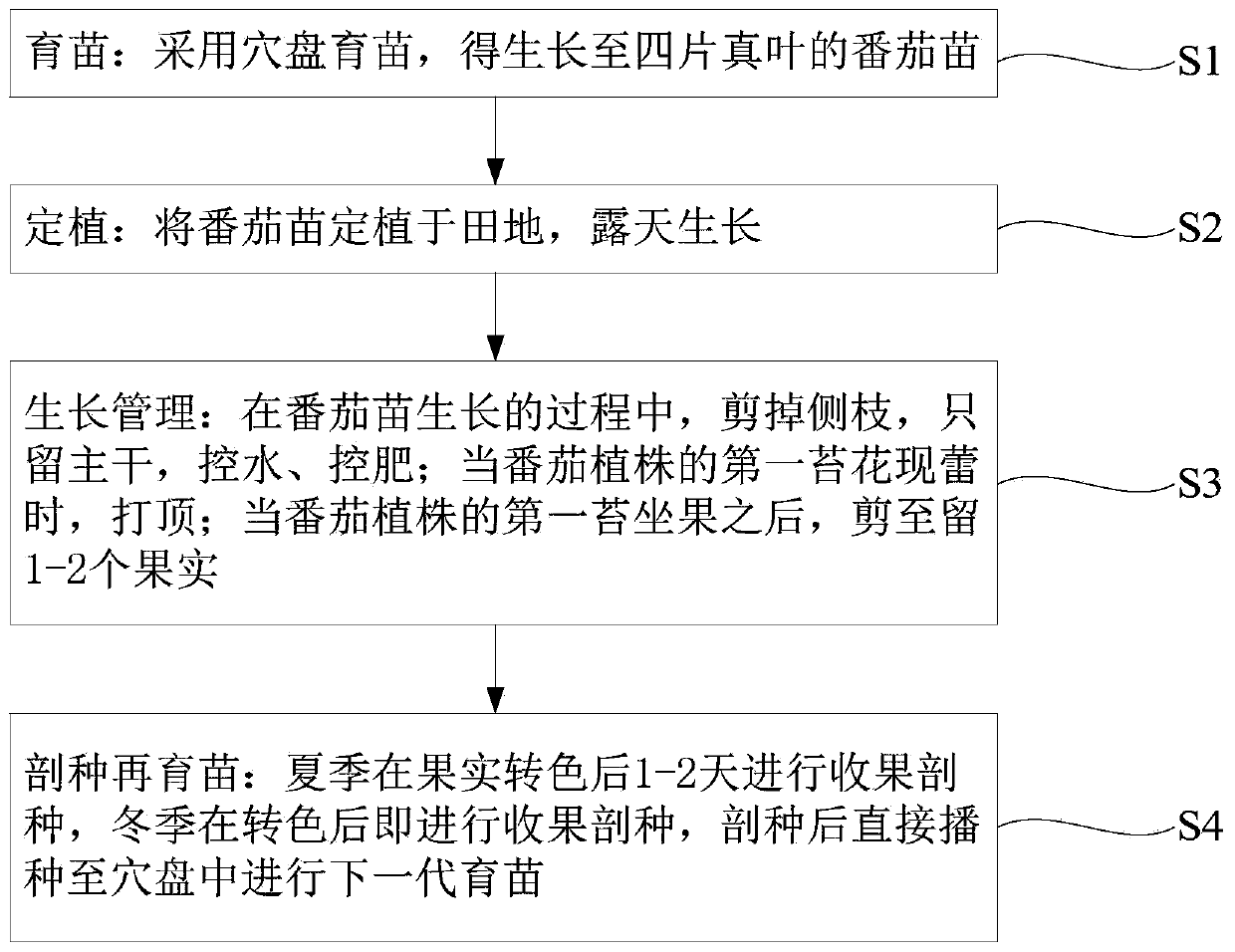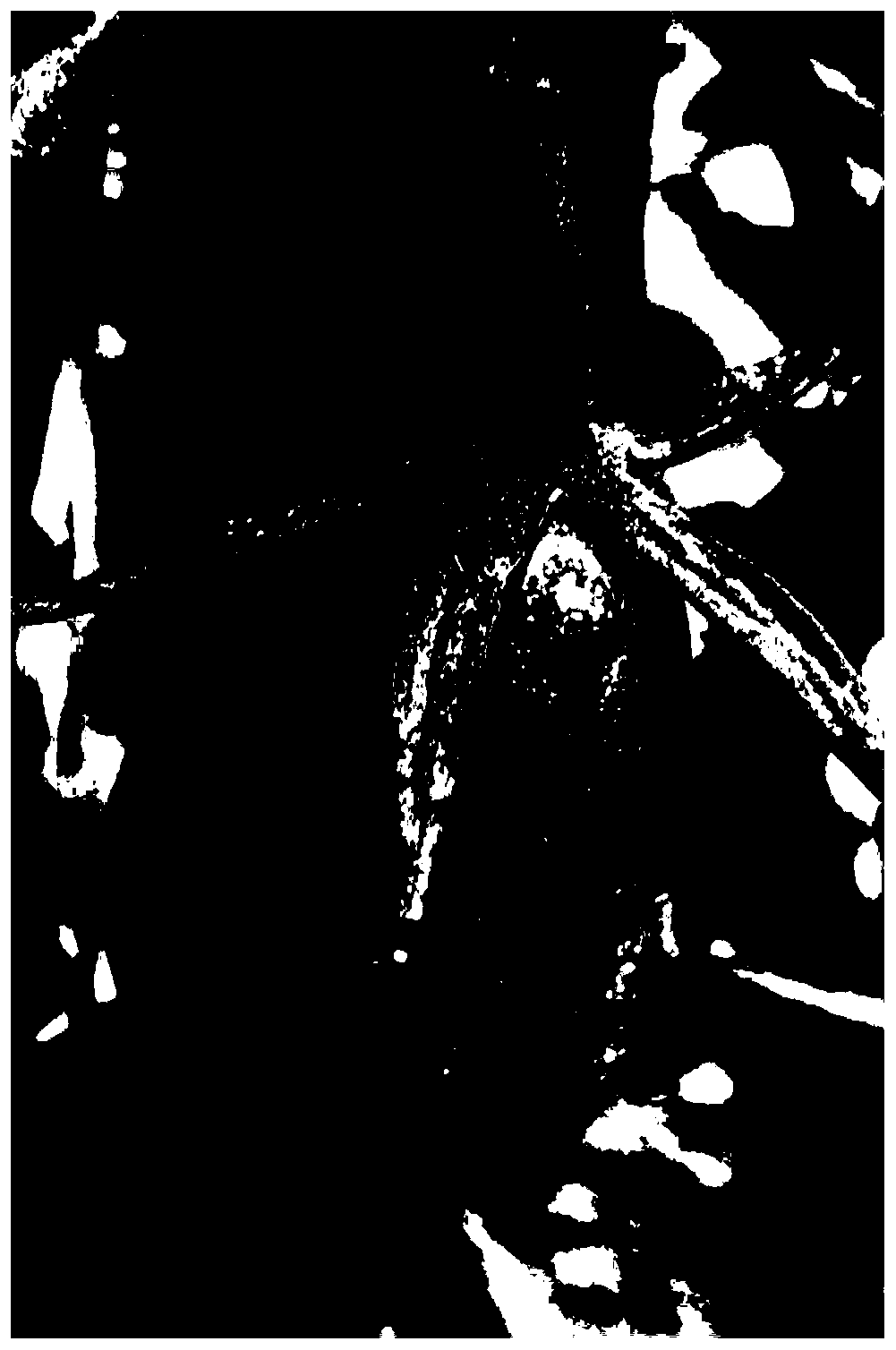Method for in-situ generation addition and rapid breeding of solanum lycopersicum
A tomato, fast technology, applied in the field of plant cultivation, can solve the problems of time-consuming and laborious, failure to realize the continuous breeding mode, etc., and achieve the effect of convenient unified management and accelerated tomato growth
- Summary
- Abstract
- Description
- Claims
- Application Information
AI Technical Summary
Problems solved by technology
Method used
Image
Examples
Embodiment 1
[0045] The present embodiment provides a kind of method for rapid breeding of tomato in situ, comprising the following steps:
[0046] S1, raising seedlings:
[0047] Adopt hole trays to carry out seedling cultivation, pre-wet the seedling cultivation substrate (RWC40%), sow at a depth of about 1.2cm, pour a small amount of water after covering with vermiculite, and raise the seedlings until tomato seedlings growing to four true leaves.
[0048] When raising seedlings in early spring or winter, lay geothermal wires under the hole trays and build small sheds.
[0049] Watering throughout the seedling stage follows the principle of "no drying, no watering, watering when it is dry, and watering thoroughly".
[0050] S2, colonization:
[0051] The tomato seedlings grown to four true leaves of step (1) are planted in the field, and the preferred seedling spacing is 15cm, and they are grown in the open air.
[0052] Wherein, the cultivation soil in the field is formed by mixing s...
Embodiment 2
[0066] The present embodiment provides a kind of method for rapid breeding of tomato in situ, comprising the following steps:
[0067] S1, raising seedlings:
[0068] Adopt hole trays to carry out seedling cultivation, pre-wet the seedling cultivation substrate (RWC40%), sow at a depth of about 1.2 cm, pour a small amount of water after covering with vermiculite, and raise the seedlings until tomato seedlings growing to four true leaves.
[0069] When raising seedlings in early spring or winter, lay geothermal wires under the hole trays and build small sheds.
[0070] Watering throughout the seedling stage follows the principle of "no drying, no watering, watering when it is dry, and watering thoroughly".
[0071] S2, colonization:
[0072] The tomato seedlings grown to four true leaves of step (1) are planted in the field, and the preferred seedling spacing is 15cm, and they are grown in the open air.
[0073] Wherein, the cultivation soil in the field is formed by mixing ...
PUM
 Login to View More
Login to View More Abstract
Description
Claims
Application Information
 Login to View More
Login to View More - R&D
- Intellectual Property
- Life Sciences
- Materials
- Tech Scout
- Unparalleled Data Quality
- Higher Quality Content
- 60% Fewer Hallucinations
Browse by: Latest US Patents, China's latest patents, Technical Efficacy Thesaurus, Application Domain, Technology Topic, Popular Technical Reports.
© 2025 PatSnap. All rights reserved.Legal|Privacy policy|Modern Slavery Act Transparency Statement|Sitemap|About US| Contact US: help@patsnap.com



